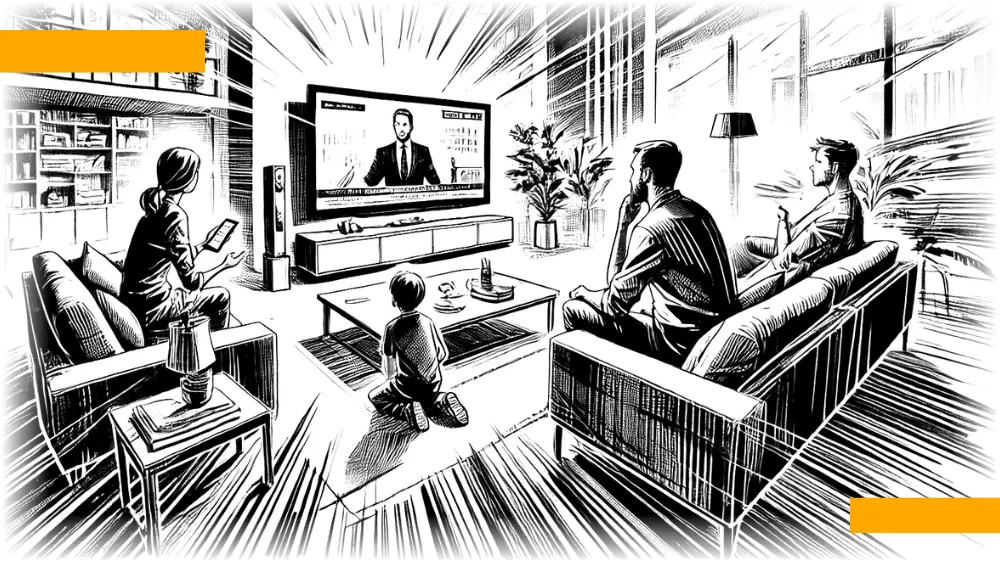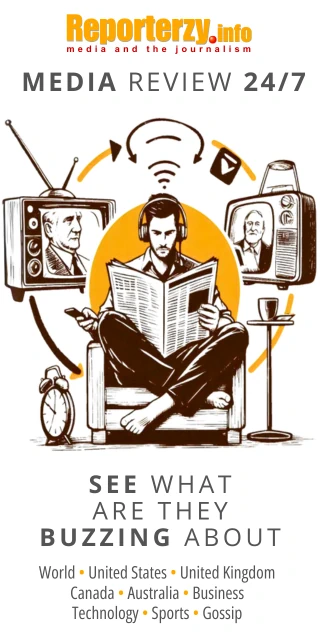 illustration: DALL-E
illustration: DALL-EA research team - Jan Pfänder from the Jean Nicod Institute in Paris and Sacha Altay from the University of Zurich - analyzed data from 67 experimental studies covering nearly 200,000 participants across 40 countries. Most were from the US and Europe, but the results also included data from Asia, Africa, and South America. Participants assessed the credibility of over two thousand news items - both true and false - previously verified by fact-checkers.
Pfänder and Altay published their findings in the article "Spotting false news and doubting true news" in Nature Human Behaviour. The result? In the vast majority of cases, people rated true news as more credible than false news. This effect was consistent regardless of country, headline format, or topic.
Key findings that confirm people’s ability to distinguish truth from falsehood:
- 298 out of 303 analyzed effects showed higher ratings for true information.
- 79.9% of participants had a positive "truth discernment" score.
- The average statistical effect (Cohen’s d = 1.12) is considered large in social sciences.
While concerns about disinformation remain, the researchers emphasize that most of us can distinguish between reliable and false information - at least when asked in an experimental setting.
More doubt toward truth than belief in falsehood
A more interesting and less intuitive result involves the so-called "skepticism bias" - the difference between mistakenly judging true information as false versus mistakenly accepting false information as credible.
Pfänder and Altay found that participants more often rejected true information than believed in false news. This effect was modest (Cohen’s d = 0.32) but consistently present across more than 200 analyzed cases.
Between the results list and the next section, it’s worth noting the context. The authors suggest that this skepticism may stem from how information is presented. Most experiments used Facebook-like layouts - headline, image, short description. According to Reuters Institute research, users trust such content less than news published on editorial websites.
Examples that amplify this effect:
- Headlines with images and leads triggered more skepticism than the same content in plain text.
- When participants saw politically incongruent news (e.g., a liberal article rated by a conservative), they judged it as less credible - regardless of its truth.
Polarization fuels skepticism more than gullibility
Especially interesting are the findings on so-called political congruence. Many studies presented participants with news that aligned or conflicted with their political views. The analysis showed that alignment didn’t affect truth detection - but incongruent news was met with more skepticism.
The table below shows skepticism levels depending on political congruence:
| Type of news | Average skepticism level (Cohen’s d) |
|---|---|
| Aligned with beliefs | −0.20 |
| Incongruent with beliefs | +0.58 |
The takeaway? Participants weren’t more likely to believe false news that aligned with their beliefs - but were significantly more skeptical of news that contradicted them.
This is a key insight for communication strategies. Instead of "preaching to the choir", it may be more effective to encourage openness toward information from across the divide.
The bigger problem: distrust in reliable sources
Paradoxically, the real problem isn’t too much trust in fake news - but declining trust in reliable information. As the authors note, since true news is far more common in our environment than falsehoods, rejecting them can have more damaging consequences than occasionally believing disinformation.
Data showing the scale of the issue:
- Only 59% of participants had a positive skepticism score (meaning they more accurately identified falsehoods than truths).
- 35% had a negative discernment score - judging truths as false and vice versa.
- In studies with raw data (over 42,000 participants), only 12% had extremely negative results.
The authors suggest rethinking how we approach educational interventions. Rather than just warning people about fake news, it may be more effective to encourage trust in credible sources. This paradigm shift could improve the quality of public discourse without fostering excessive suspicion.
A new approach to disinformation
Pfänder and Altay propose a new strategy for combating disinformation. Since most people can distinguish truth from falsehood, the issue is not a lack of skill but a lack of motivation to apply that skill.
They recommend changing the environments in which people consume news - e.g., through reminders to focus on credibility or by redesigning social media platforms. Instead of teaching how to spot fake news, we should encourage reflection and concentration.
This shift from education to motivation may turn out to be the most effective weapon in the fight for better information quality - and greater trust in the truth.
***
The study was conducted by Jan Pfänder (Institut Jean Nicod, École normale supérieure, École des hautes études en sciences sociales, Centre national de la recherche scientifique, Paris) and Sacha Altay (Department of Political Science, University of Zurich). The meta-analysis covered 303 effects from 67 experimental studies involving 194,438 participants from 40 countries. Full results are available at nature.com
COMMERCIAL BREAK
New articles in section Media industry
Advertising market 2025. Poland, Europe and the World
Marcin Grządka
The global advertising market is growing by 8.8% in 2025 and will reach a value of 1.14 trillion dollars. The industry result in Europe records slightly lower dynamics, at the level of 5.8%. In this comparison, Poland performs clearly above the average. We will record an increase of 8.9% this year and a value of 18.56 billion PLN - estimates WPP Media in the annual report "This Year Next Year".
The print media market 2025. Three global trends
Krzysztof Fiedorek
The market value is 359.53 billion dollars, yet the erosion is visible to the naked eye. The decline for newspapers will amount to -2.3 percent. Despite this, print retains strength: it generates 76 percent of subscription revenues and enjoys 82 percent consumer trust. The future of the industry is defined by hybrid strategies and niche specialization.
Journalism in the age of AI. Why people prefer humans over machines
Krzysztof Fiedorek
Only 12% of people accept news created solely by AI, while 62% prefer those written by humans. At the same time, only 19% notice labels indicating the use of artificial intelligence, while younger audiences ask AI to explain the content to them. These are the findings of the Reuters Institute report on artificial intelligence in media.
See articles on a similar topic:
Cyberviolence and hate disguised as a joke. The RAYUELA report on youth
Krzysztof Fiedorek
The study conducted in five countries reveals a harsh truth. Online violence is not evenly distributed. It is a digital map of prejudice that hurts the most those who stand out the most. "It’s just a joke." That’s how violence often begins. Young people go through it in silence.
Communication gap. Is anyone listening to Polish women?
Krzysztof Fiedorek
Brands claim they understand women. Media say they speak their language. Meanwhile the report "Polki 2025" shows that most messages still miss the mark. Women do not want empty slogans. They expect a dialogue that truly relates to them.
Radio Fanatics. Who Listens for One-Third of the Day?
Bartłomiej Dwornik
One in five listeners now spends over 8 hours daily listening to the radio, according to data from the Radio Track study. Since the beginning of the year, the number of these avid listeners has grown by 300,000.
Russian Propaganda. Debunk.org Report on Moscow's Disinformation Scale
BARD, PAP Mediaroom
In 2022, the Russian Federation allocated approximately 143 billion rubles to mass media (equivalent to 1.9 billion US dollars), exceeding the planned budget by 25%. For the current year, the Kremlin's budget for this sector is set at 119.2 billion rubles (1.6 billion dollars).






























